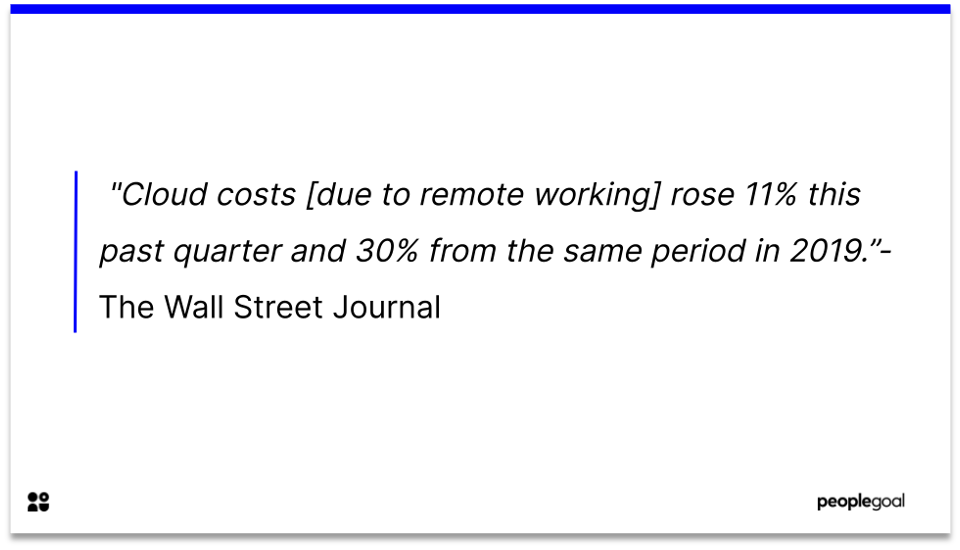Telecommunication is a working style that permits professionals to work outside of a conventional office environment. Telecommuting reflects the idea that work shouldn’t be done in a particular place to be executed effectively.
The use of telecommunication is increasing due to the rise of remote work in the COVID-19 pandemic. This is because telecommuting offers a way for team members to work from their home effectively in the long term. This is facilitated through the flexible schedule even in different time zones it can provide.
What is telecommuting?

Employees telecommute to work through technology, using either personal or company devices to remain a connected part of the team. They can communicate to team members through apps such as Slack and Zoom while working from home.
Employees can enter the office to attend meetings in-person, have face to face check-ins, or attend one-to-ones to touch base. This helps to maintain the employee and employer relationship. However, with many options for distance conferencing, there’s is little need for this.
Telecommuting is beginning to be used by many different sectors at the highest level. Amazon and Americain Express for example are allowing their employees who can work from home to do so from June 2020. This is even beginning to be used in the medical profession as shown by the spike of availabilities of this type on Indeed.com.
Benefits of telecommuting

1. Cut office costs
While the Wall Street Journal identified that due to remote work: Cloud costs rose 11% this past quarter and 30% from the same period in 2019.

However, Forbes has found that remote working lets you cut down massively in company costs. For example, you can save $11,000 per half-time remote employee and $22,000 for a full-time remote employee.
People working from home will also save money, as a survey by FlexJobs found a saving of $4,000 per year per remote employee. This was from them not spending money on gas, lunches and work clothes. It also cuts the costs your office has on the environment by reducing commuting pollutants, paper usage, and electricity usage.
2. Increased productivity
Due to the ability to reinvest their commuting time employees are rarely late and can focus as soon as they “clock in”. It also accommodates introverted employees by keeping them in a familiar and more comfortable environment. This is the same reason telecommuting improves employees overall well-being, as it allows them the flexibility to remain in the comfort of their own homes.
3. Flexible schedule
Gallup found that: 54% of office workers say they’d leave their job for one that offers flexible work time. Therefore, it could be the job flexibility that is driving up job satisfaction by offering a better work-life balance to your employees. This allows for the personal adjustment of days per week worked and their working hours.
Telecommuting promotes highly engaged employees leading to more productive work. This is seen in the 41% lower absenteeism, 40% fewer quality defects, and 21% higher profitability according to research.
Learn how to easily track your employee engagement here 👈
Best practices to optimise your telecommuting employees:

1. Assign an “office” space.
Encourage that telecommuters make a calm spot to think and concentrate. While a detailed setup is not necessary, a territory where business-related material can be sorted preventing significant papers from being thrown out or lost someplace in the house is important. A committed work area prepares the mind to associate this area with working. This prompts the mind to adjust to a work mentality similar to an office space – improving motivation.
2. Set up work hours.
It’s highly recommended that businesses urge telecommuters to create calendars and stick to them, as replicated in the workplace. Other than making it simpler for the telecommuter to remain on target, this normality helps supervisors, associates, and relatives plan connection as needs be.
Have a look at our calendar elements at People Goal, it provides your employees with a user-friendly visual calendar to store their important dates and times. Furthermore, it is especially useful for both managers and employees scheduling one-on-one meetings or check-ins, and for specifying by which date you aim to achieve a certain task or objective.

3. Find your optimum work hours.
f your end goal is that your telecommuters can pick their hours, guarantee them that outcomes are what is important. The opportunity to finish tasks when energy levels are at their highest potentially outside normal working hours can cultivate more beneficial outcomes.
4. Communicate early and frequently.
Maintaining the same level of communication or even increasing it when working from home is vital. Set extensive rules in regards to answering emails and calls etc, shared schedules and archives, and favored specialized strategies for different circumstances.
Encourage your remote workers to just remain in touch with each other as they see fit. You should offer your employees somewhere to touch base with everyone, and to ask questions, such as Slack.

5. Organize shared trust.
At last, the business and flexible laborers need to understand that working from home requires courses of action that include high levels of trust. Tell telecommuters how they can reinforce trust through activities. For example, requesting help when required, and reliably producing quality work.
Consequently, managers can respond to trust by giving positive recognition, requesting input, and avoiding micromanagement. All things considered, the “best practice” is a staff cooperating to accomplish outstanding results!
Recording your work is a great way to improve shared trust. Have a look at our performance workspace, which provides an efficient and straightforward way for your employees to record their goals and professional development.
Telecommuting implementation checklist**

- Evaluate each of the positions and determine if an employee’s physical presence is required full-time, part-time or never, except for periodic meetings.
- Decide which remote work programs might be viable work options for you.
- Identify which employees have sufficient institutional knowledge and experience to be considered for a flexible/remote work arrangement.
- Evaluate the different communication and collaborative tools such as Skype and Slack.
- Develop a guide for each type of remote work option, you can use Peoplegoals remote working guide as an example.
- Decide on a pilot program and a trial group of staff for the pilot. For example, the pilot program might allow a trial group to work from home one day a week. It is advised to schedule this so that they are not all working from home on the same day at the start.
- Schedule a company-wide meeting to discuss flex-work arrangements and the positions and level of experience that a flex-work arrangement would be suited for. Afterwards, have managers meet with each of their eligible staff to determine the level of interest in this.
- Train the entire staff on how to use the communication and collaborative tools.
- Implement, monitor, and evaluate the pilot program.
Telecommuting: The future of work?
Telecommuting offers a way to modernise your working environment by introducing flexible work into your company culture. You may not choose to have all employees remote working full-time. However, it should be a goal to create action plans to support the employees where telecommuting would improve their productivity and work-life balance.
Ready to 3x Your Teams' Performance?
Use the best performance management software to align goals, track progress, and boost employee engagement.




